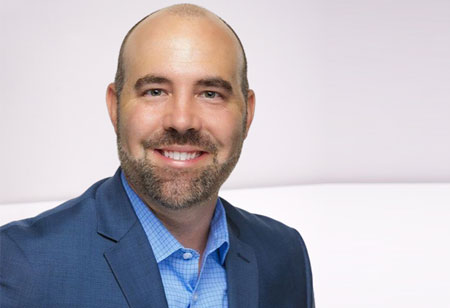Thank you for Subscribing to Healthcare Business Review Weekly Brief

Healthcare Sector and Its Challenges
Healthcare Business Review
Ryan Garland is the System Director of the Radiology and Respiratory department at Edward-Elmhurst Health where he manages 16 satellite facilities and 2 hospitals. Ryan has a background in Masters of Healthcare Administration (MHA) and has been working in the healthcare industry for over 22 years. He’s part of multiple committees that look for opportunities to grow the market share and manage trials and tribulations.
What according to you is the biggest challenge in the healthcare sector right now?
The biggest challenge in the healthcare sector right now is staffing. The pandemic has painted a specific picture of the profession where people don't want to get into healthcare because of COVID-19. We are forced to look at agency staffing because the school system, which is one of our major sources of employment, is not getting enough students to fill the quota. Whereas, a few years ago, students were put on a two or three year hold to get into the Radiology or Ultrasound program.
The younger generation employees are quitting work at the hospital to go work for the agency because they pay significantly more per hour. We're rehiring them through the agency and paying twice their usual salary.
“The pandemic has painted a specific picture of the profession where people don't want to get into healthcare because of COVID-19”
This problem is just exacerbating, especially during a time when staffing is at an all-time low and we’re seeing higher than ever volumes in the healthcare sector.. The burnout is real and it's probably the biggest challenge right now.
How do you see mergers and acquisitions in the healthcare industry helping hospitals?
Mergers and acquisitions add a lot of value in terms of cost advantages that a hospital obtains due to the scale of operation. Our merger with Elmhurst, a standalone private community hospital in Chicago Suburb helped us gain economies of scale in terms of saving money on contracts and being able to have better pricing with operational items that we use in the healthcare industry. In January, we went on to merge with NorthShore, which had gone through a similar acquisition and has six hospitals.
Most of our focus with these mergers has been on the economy and where we can get better contract pricing. Our supply chain folks have been looking at the details of our contract and finding ways so that we can essentially save money. We've saved a substantial amount of around 10 million in the first year since our successful merger with Elmhurst and NorthShore.
How did the supply chain disruption affect you?
The supply chain disruption caused a ripple across the industry and everyone had to switch gears to try and react to that. We had a CT contract and 90 percent of our contract was made by GE Healthcare in one plant in Shanghai, China whose manufacturing plant was closed down for weeks due to the pandemic.
There were alternate suppliers like Bracco and Bayer but they couldn't absorb all of the lost volumes and affected the global supply chain and operations had to change because of it. We were fortunate and did not have to amend our protocol because we had a relationship with Bracco as we were already ordering from them.
Most people did not have that luxury because they were buying all their supplies from one vendor to get better pricing. They were stuck by contracts and couldn’t buy from anyone else. These other suppliers weren’t going to come to their rescue because they had their regular customers to take care of and did not have the bandwidth, given the situation. So, the supply chain disruption significantly hurt their operations and profit margins.
Our workforce is undergoing significant change, which necessitates the development of innovative approaches to employment, such as inventive methods for recruiting and retaining workers
Hospitals should try working with different vendors while still keeping their economies up with a creative contract. They should have a backup agreement to help them in such situations, the price might be higher but they’ll be glad that they had it and could use it.
How have the advancements in Artificial Intelligence affected the Radiology Sector?
We see developments across the IT companies in AI software regarding radiology to make them more efficient. Most of it is driven on the position side where you've got a radiologist who reads imaging all day long and the AI software aims at finding potential pathology by running the imaging through an algorithm and putting it up on the top of the list, so the reading list is triaged considering acuteness. We have not embarked on that much but are working with a company called ADOC that we may engage with.
What would be your piece of advice to your peers to create a sustainable system in their organization?
My advice would be to think outside the box and take care of recruitment and retention. Our workforce is changing and people want a more personalized work experience. They want to be recognized and acknowledged for their work. Talking to the staff and getting to know what drives them and what they want is the key, we have to focus on. Engaging and affiliating with schools has helped us a lot with the staffing issue. The ability to conduct interviews and accept their students has helped us grow as an organization.









